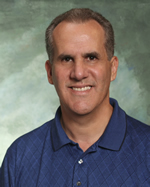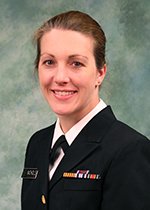Category: Uncategorized
STATE VITALS: WYOMING
Wyoming ranks 41st in the U.S. in births to unmarried mothers (35.5% of all births) and cesarean delivery rates (27% of all birhts). The state’s marriage rate is also higher than the overall U.S. rate (7.8 marriages per 1,000 population vs. 6.8 per 1,000 nationally). However, among the ten leading causes of death in the U.S., Wyoming mortality Read More >
Posted on bySTATE VITALS: VERMONT
Vermont has the lowest preterm birth rate in the country (8.8% of all births) and a significantly lower rate than the U.S. as a whole (11.7%). The state’s teen birth rate is also lower than the overall U.S. rate (16.8% vs. 31.3%). Vermont has the 10th lowest low birthweight rate in the U.S. However, among the ten Read More >
Posted on byHealth Insurance Coverage and Adverse Experiences With Physician Availability in the US
Rates of private insurance and public coverage have been increasing. As coverage and utilization increase, a growing concern is the availability of health care providers to meet patient needs. Almost 90% of general physicians accept new patients with private insurance, but less than 75% accept new patients with public coverage (e.g., Medicare, Medicaid), and the Read More >
Posted on byNational Study of Long-Term Care Providers Report
NCHS has released the first in a series of NSLTCP reports today. Long-Term Care Services in the United States: 2013 Overview includes general, descriptive information on the supply, organizational characteristics, staffing, and services offered by providers of long-term care services; and the demographic, health, and functional characteristics of users of these services. The report shows Read More >
Posted on byMeasures of Muscular Strength in U.S. Children and Adolescents
In 2008, the federal government released the Physical Activity Guidelines for Americans, which provide guidance on the types and amounts of physical activities that provide substantial health benefits for Americans of all ages. Regular physical activity reduces the risk of many adverse health outcomes and helps control the percentage of body fat in children and Read More >
Posted on byWinter Injuries
With winter now upon us, several storms have already hit much of the country with dangerous snow and ice. The wintery conditions can result in injuries that often lead to hospitalizations that are sometimes fatal. The impact on society is direct in terms of medical costs and indirect in terms of lost productivity. There is a wealth of NCHS data that Read More >
Posted on byTrends in Insurance Coverage and Source of Private Coverage Among Young Adults
NCHS has put a report that provides estimates describing the previous insurance status and sources of coverage among privately insured young adults aged 19–25, using data from the 2008–2012 National Health Interview Survey. Comparisons are made with adults aged 26–34, the most similar age group that was not affected by the Affordable Care Act (ACA) provision. Young Read More >
Posted on byMotor Vehicle Deaths
The recent news that Paul Walker, the star of the “Fast & Furious” movie series, was killed in a car crash has generated interest from the public into data on motor vehicle fatalities. Though the National Highway Traffic Safety Administration is the main source of information about traffic accidents and fatalities in the U.S., the Read More >
Posted on by 1 CommentPregnancy Rates for U.S. Women Continue to Drop
NCHS has released a report that provides a comprehensive picture of pregnancies and pregnancy outcomes. Pregnancy rates for women in the United States continued to decline in 2009, reaching the lowest level in 12 years (102.1 per 1,000 women aged 15–44). This level is 12% below the 1990 peak (115.8). The estimated number of pregnancies Read More >
Posted on byMore Than 6% of U.S. Adolescents Take Psychotropic Drugs
A new report released by NCHS provides the estimate of any psychotropic medication use in the past month among U.S. noninstitutionalized adolescents aged 12–19 during 2005–2010, using National Health and Nutrition Examination Survey (NHANES) data. Psychotropic medication is a type of drug used to treat clinical psychiatric symptoms or mental disorders. Specific psychotropic drug types Read More >
Posted on byMore Drug Overdose Deaths in Rural America Than Urban Counties
Drug overdose deaths are on the rise, and from 1999 to 2009 rural U.S. counties saw a larger jump in these drug-poisoning deaths than their urban counterparts. While the highest death rates were seen in central metropolitan areas during this period, the rate grew by 394% in rural counties compared to a 279% spike for large Read More >
Posted on byDementia Special Care Units at Residential Care Communities
Assisted living and similar residential care communities provide an alternative to nursing homes for individuals with dementia who can no longer live independently. In 2010, about 42% of individuals living in residential care communities had Alzheimer’s disease or other dementia. Individuals with dementia can live in residential care communities that have dementia special care units, Read More >
Posted on byStatistics on Statin Use
High cholesterol is a risk factor for heart disease, which is the leading cause of death for both men and women. Nearly 600,000 people die of heart disease in the United States every year–that’s 1 in every 4 deaths. Every year about 715,000 Americans have a heart attack and the costs of coronary heart disease alone costs the Read More >
Posted on by 1 CommentDirector’s Corner—The Importance of Privacy

With all the recent concerns about the collection and use of information gathered by the National Security Agency and other agencies both public and private, I think it is an appropriate time to go over the responsibilities of a federal statistical agency like NCHS. NCHS and all other federal statistical agencies are governed by four Read More >
Posted on byDuring 1999–2010, a total of 49,762 deaths from drowning occurred in the United States, an average of 4,147 deaths per year. Summer is particularly a high-risk time of year for drowning, with July being the peak month (8,683 drowning deaths in July during 1999-2010 – an average of nearly 724 drowning deaths every July). Males Read More >
Posted on byPrescription Sleep Aid Use
According to estimates, 50–70 million Americans suffer from sleep disorders or deprivation, which can not only hinder daily functioning, but can also adversely affect their health. Prescription sleep aids are one of the treatment options for trouble going into or maintaining sleep. However, long-term use of sleep aids has been linked to adverse outcomes in Read More >
Posted on byReflections of an International Statistician

By Dr. Pavlina Rumcheva, Senior Service Fellow NCHS Office of Research and Methodology I will tell a brief story about my life as a statistician around the world. My starting point was the city of Sofia, the capital of Bulgaria. I was born and grew up there, and lived there during my high school and Read More >
Posted on byDr. Nat Schenker Serves Statistics as ASA President-Elect

As director of the Office of Research and Methodology, Dr. Nathaniel Schenker spends his working days absorbed in the details of the world of statistics, with emphasis on how they apply to National Center for Health Statistics (NCHS). Outside of the office? He spends more time on the world of statistics, but with a more global view. Read More >
Posted on byAsk the Expert: LCDR Erin Nichols, Verbal Autopsy

[Editor’s Note: NCHS’s International Statistics Program collaborates with domestic and international partners in many public health projects around the world. We spoke with epidemiologist LCDR Erin Nichols about one of the program’s more ambitious projects: verbal autopsy.] Q. How did the verbal autopsy project come about, and who you will be working with? A. Read More >
Posted on byNCHS Undertakes Systematic Evaluation of Major Programs

The National Center for Health Statistics (NCHS) is responsible for monitoring the nation’s health. To make sure that its programs are on target to do so requires evaluation and advice from the broader scientific community. The Board of Scientific Counselors (BSC) is a committee charged with providing advice and making recommendations to the secretary of Read More >
Posted on byBirth Numbers Continue to Decline
NCHS has released a report that presents 2011 data on U.S. births according to a wide variety of characteristics. The vast majority of these findings were previously published in October 2012 in “Births: Preliminary Data for 2011.” Findings that were not in the preliminary report: The 2011 twin birth rate was 33 per 1,000 total Read More >
Posted on byQDRL Works with Federal Agencies to Evaluate Blood Donation Procedures

An integral element of the Office of Research and Methodology’s (ORM) mission is to work with other federal statistical agencies to develop and test survey instruments. To that end, in 1985, the National Center for Health Statistics (NCHS) created the Questionnaire Design Research Laboratory (QDRL). Recent projects include examining alternatives to sexual identification questions used in NCHS’s Read More >
Posted on byNHIS Report on Health Insurance Coverage
NCHS has released a report on selected estimates of health insurance coverage for the civilian noninstitutionalized U.S. population based on data from the 2012 National Health Interview Survey. Key Findings from the Report: • In 2012, 45.5 million persons of all ages were uninsured at the time of interview, 57.7 million had been uninsured for at Read More >
Posted on bySmoking on the Decline, Data From the 2012 National Health Interview Survey Show
Fewer than 1 in 5 American adults now smoke, according to new data just released from the 2012 National Health Interview Survey (NHIS). An estimated 18% of people in the U.S. age 18 and over are current smokers, down significantly from the 25% who were smokers a decade and a half ago – and down Read More >
Posted on byNumber of American Homes with only Wireless Telephones Growing
The trend towards ditching our landline telephones continues, according to a new report from NCHS. Nearly two in every five American homes had only wireless telephones (also known as cellular telephones, cell phones, or mobile phones) during the second half of 2012—an increase of 2.4 percentage points since the first half of 2012. In addition, Read More >
Posted on by
